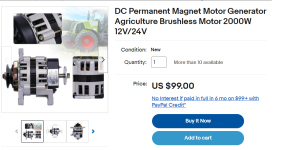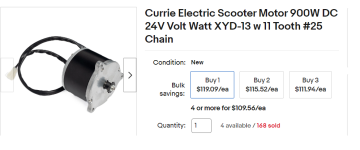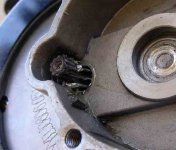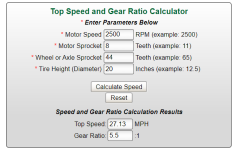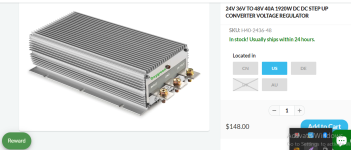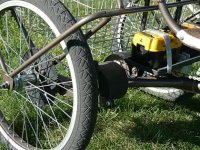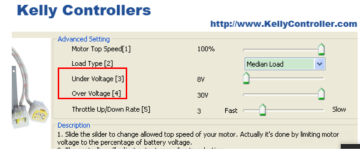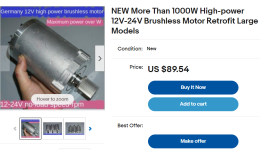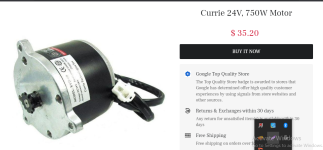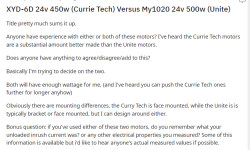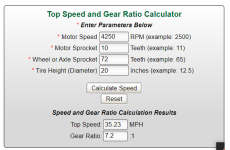I am always watching youtube videos where DIY ebikes are built from motors that were never supposed to power an ebike or any EV. Some are successful and some not so much. It is interesting though to see.
I have seen a few alternators used and even a washing machine motor. It is as simple as typing either of those with ebike after it and there you go.
I am posting this because I found a motor for about $100. My criteria is 24V. 12V would require 6 or 8 gauge wire to get decent power so will stick with 24V for this post. Nothing > 30V. The reason is I own super heavy lithium titanite. Lishen 18 Ah LTO. I ordered 24 back when stimuli's checks were sent out.
I did not really check for size and weight but went for performance only. I was a little disenchanted when hooking up 20 of them for 50V. It did work and have two e bikes I can run about 45 pounds of battery with when up to 20 miles of range is needed for a single charge. But what if only up to 10 miles is required or even less. > 90% of my trips are < 10 miles.
I decided to split my LTOs up into two separate packs. In series they will weigh about 50 pounds and are 55V @ 22S. The 10S 25V pack will weigh about 20 pounds. The 12S pack about 23 pounds. The 12S is actually two 6S packs in series so can mount them to either side of the triangle in a special built rack. Since they are so long they only work on a 26" or larger frame. The 10S 25V can fit on a 20" ebike on a rack on the top bar. I plan on building both. Kelly makes the perfect programable brush controller for both < $100
That is what has brought me here. The most powerful 24V ebike hub motor is only 250 watt. It also will cost about the same as a 48V 1,000W motor. The most powerful chain drive 24V is the 900 watt Currie which is 2600 rpm and about $112 before tax and shipping. For me I would want two of those with a single rear sprocket and Kelli mini controller. It is probably what I will go with but I really want to explore all alternatives.
Ampflow makes brush motors that will run 24V. However the rpms are way too high and would require expensive and complicated gear reduction. The price is also way too high.
Please feel free to post any links for cheap DIY 24V motors > 1,000W right here. I am looking at 1,500 + @ 24V and = < 4,000 rpm if possible. I have done extensive google searches and just found this today. It has the specs. I am looking for. Not sure about a controller and even if a motor sprocket could fit on it but with a machine shop it could be possible.

Please let me know.
Skyler.
I have seen a few alternators used and even a washing machine motor. It is as simple as typing either of those with ebike after it and there you go.
I am posting this because I found a motor for about $100. My criteria is 24V. 12V would require 6 or 8 gauge wire to get decent power so will stick with 24V for this post. Nothing > 30V. The reason is I own super heavy lithium titanite. Lishen 18 Ah LTO. I ordered 24 back when stimuli's checks were sent out.
I did not really check for size and weight but went for performance only. I was a little disenchanted when hooking up 20 of them for 50V. It did work and have two e bikes I can run about 45 pounds of battery with when up to 20 miles of range is needed for a single charge. But what if only up to 10 miles is required or even less. > 90% of my trips are < 10 miles.
I decided to split my LTOs up into two separate packs. In series they will weigh about 50 pounds and are 55V @ 22S. The 10S 25V pack will weigh about 20 pounds. The 12S pack about 23 pounds. The 12S is actually two 6S packs in series so can mount them to either side of the triangle in a special built rack. Since they are so long they only work on a 26" or larger frame. The 10S 25V can fit on a 20" ebike on a rack on the top bar. I plan on building both. Kelly makes the perfect programable brush controller for both < $100
That is what has brought me here. The most powerful 24V ebike hub motor is only 250 watt. It also will cost about the same as a 48V 1,000W motor. The most powerful chain drive 24V is the 900 watt Currie which is 2600 rpm and about $112 before tax and shipping. For me I would want two of those with a single rear sprocket and Kelli mini controller. It is probably what I will go with but I really want to explore all alternatives.
Ampflow makes brush motors that will run 24V. However the rpms are way too high and would require expensive and complicated gear reduction. The price is also way too high.
Please feel free to post any links for cheap DIY 24V motors > 1,000W right here. I am looking at 1,500 + @ 24V and = < 4,000 rpm if possible. I have done extensive google searches and just found this today. It has the specs. I am looking for. Not sure about a controller and even if a motor sprocket could fit on it but with a machine shop it could be possible.

DC Permanent Magnet Motor Generator Agriculture Brushless Motor 2000W 12V/24V | eBay
Find many great new & used options and get the best deals for DC Permanent Magnet Motor Generator Agriculture Brushless Motor 2000W 12V/24V at the best online prices at eBay! Free shipping for many products!
www.ebay.com
Please let me know.
Skyler.
Attachments
Last edited:


